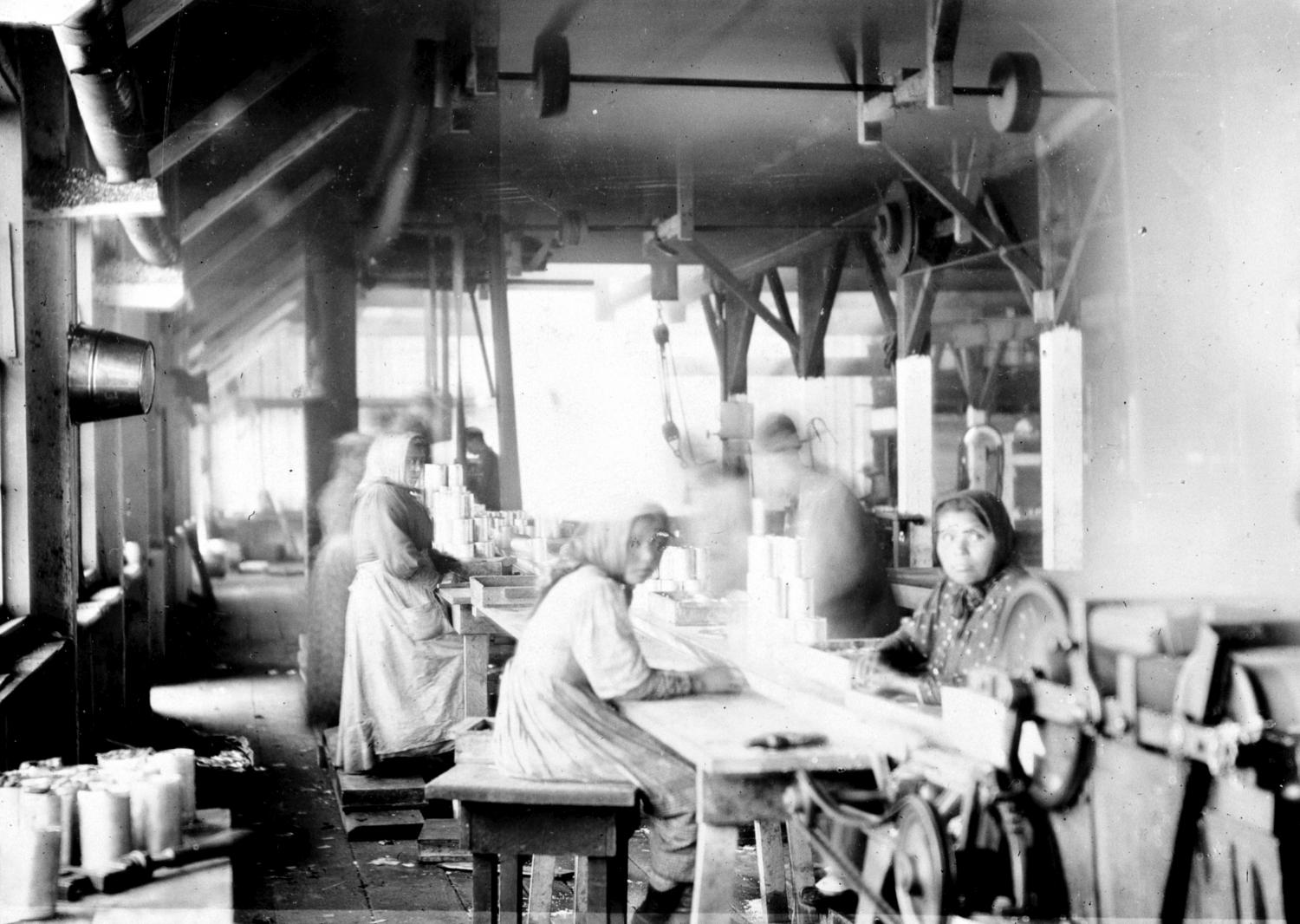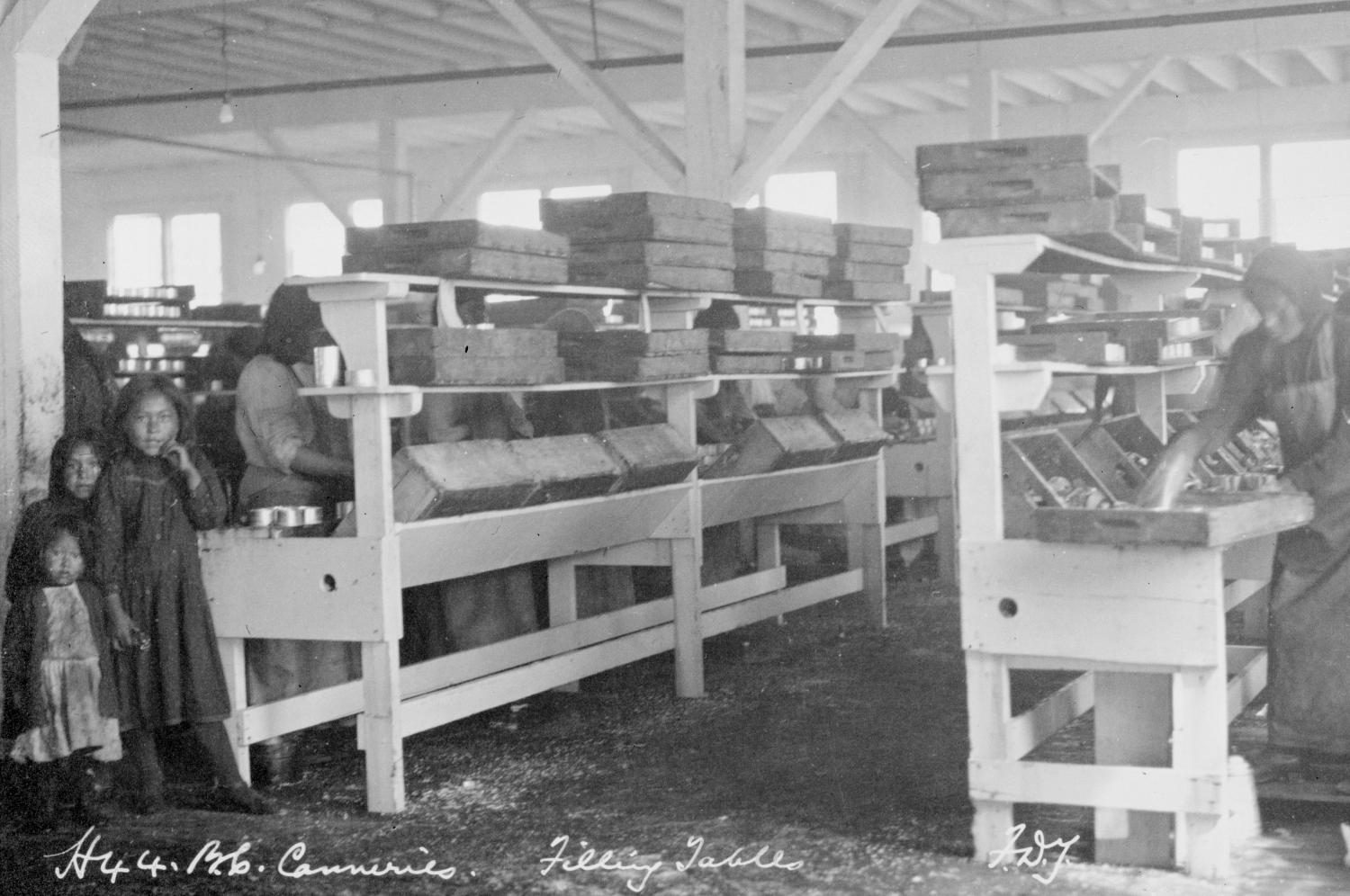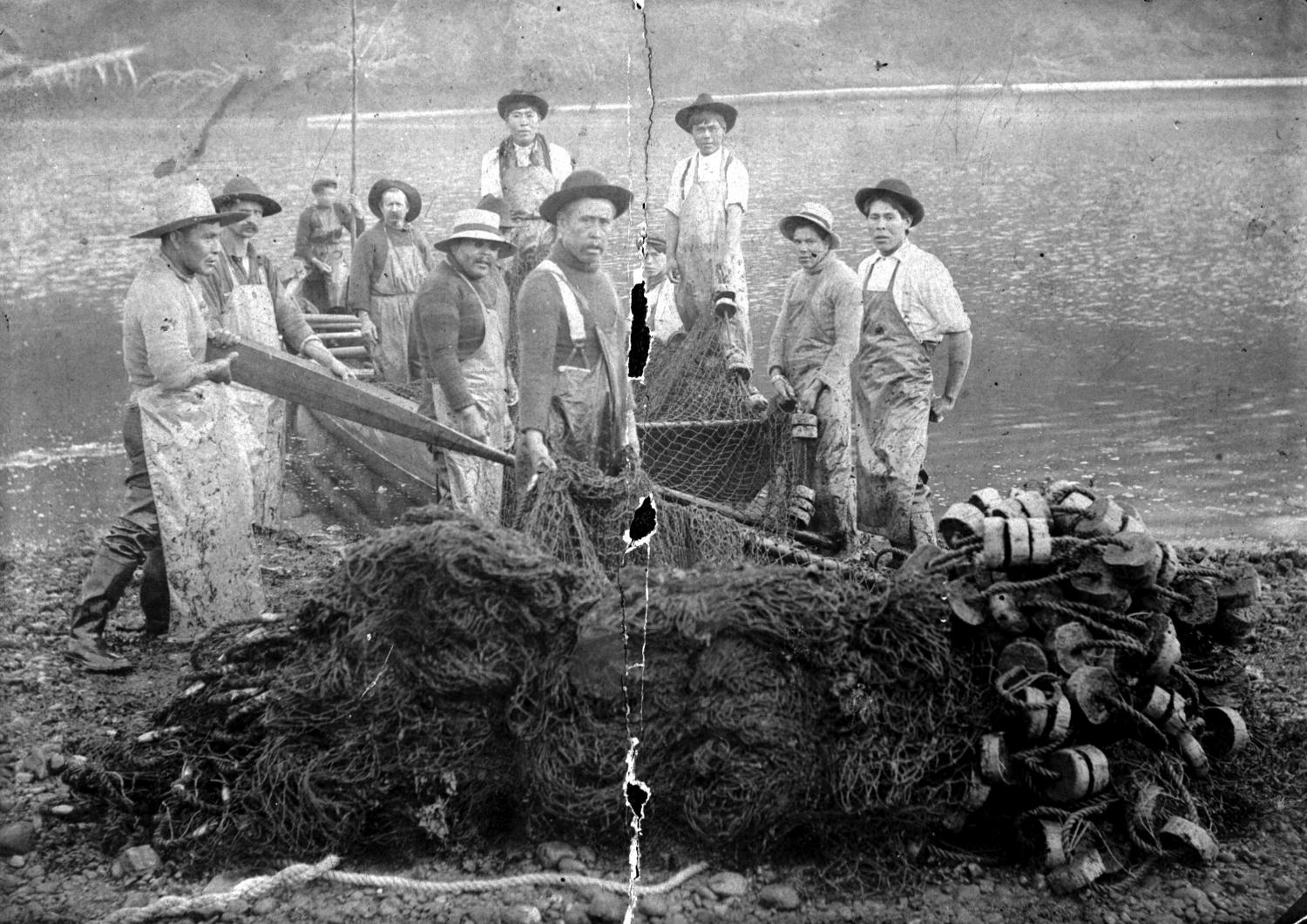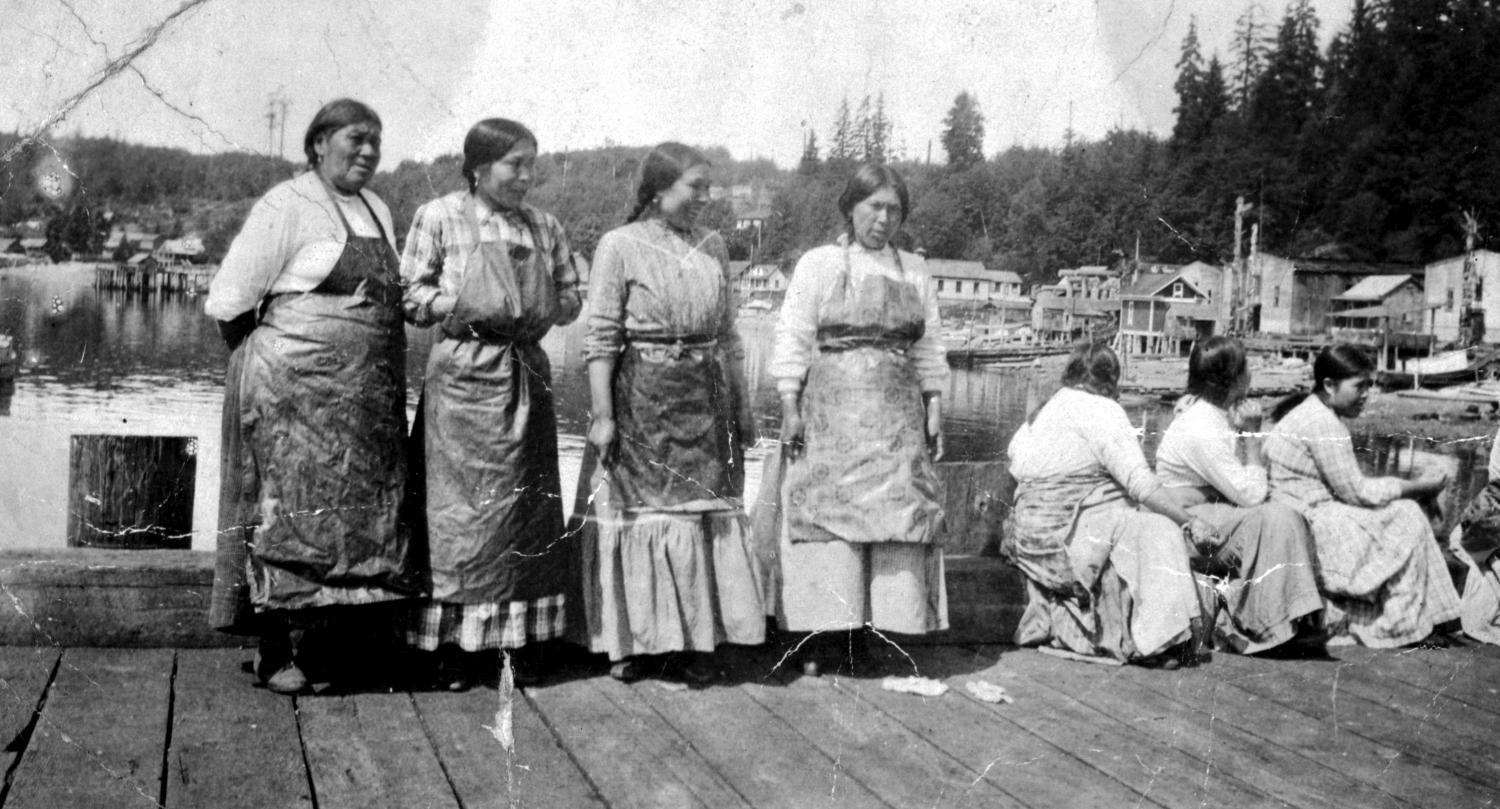Indigenous Women in Canneries
As business booms, they soon become highly sought-after workers
Date: 1895
While British Columbia’s First Nations had been fishing for salmon for generations, the 1870s brought with it a new use for the fish: canning. Traditionally, communities relied upon the yearly salmon run for food and trade. The salty brine of the sea preserved the fish for safe consumption later in the year, but smoking and other methods were also historically used. However, technological innovation and new export markets had now transformed the Fraser, Nass and Skeena Rivers into metaphorical goldmines for the Europeans who had started settling around these areas. Processing facilities began popping up along the major rivers, as well as on Vancouver Island and the Queen Charlotte Islands, now known as Haida Gwaii.
Indigenous people saw an opportunity in canneries, too. The seasonal work freed them from the commitment of waged labour and allowed for new trade connections. Cannery life often turned into a community affair. In July and August, during the peak of sockeye season, entire villages would move near the cannery. Indigenous leaders would even have a hand in cannery recruitment, deciding who would work at which location.
In short, First Nations were integral to the canning industry’s success. This was due, in no small part, to the work of women.
While fishing was traditionally the domain of men, female workers became a hot commodity for canneries. Indigenous women were paid less than their white male counterparts for every case of canned salmon, a financial boon for the cannery. Indigenous female workers became so sought after that some canneries would offer employment and fishing licenses to Indigenous fishermen, hoping to also employ their mothers, wives and sisters. And although women of various ethnic backgrounds worked in the canneries, Indigenous women were overrepresented. By 1895, nearly a third of B.C.’s canneries — which numbered 76 in 1901 — was singularly staffed by Indigenous women.
The hours were long, filled with washing, cutting and gutting fish, and filling cans as fast as possible. But, surrounded by friends and family, the canneries weren’t just a place of work; they became a social hub, a gathering place. Generations of Indigenous people grew up working together at the canneries. Couples met there and later would marry. On more than one occasion, babies were even born there.
For many, cannery work was a collective act, strengthened by the social connections that were already there. Today, only St. Jean’s Cannery in Nanaimo still operates. It has been under Nuu-chah-nuth leadership since 2015.
Sources:
1. Aboriginal Fisheries in British Columbia. First Nations and Indigenous Studies at the University of British Columbia, indigenousfoundations.arts.ubc.ca/aboriginal_fisheries_in_british_columbia/.
2. Backhouse, Frances. The Last BC Cannery Standing - and Why It Matters. The Tyee, 22 Aug. 2018, thetyee.ca/Solutions/2018/08/22/Last-BC-Cannery-Standing/.
3. Eeg, Devin Ainsworth. Race, Labour, and the Architecture of White Jobs : Chinese Labour in British Columbia's Salmon Canning Industry, 1871-1941. University of British Columbia, May 2017, open.library.ubc.ca/cIRcle/collections/ubctheses/24/items/1.0347684.
4. Morgan, Norma Jean. Life on the Line : Indigenous Women Cannery Workers' Experiences of Precarious Work. University of British Columbia, Oct. 2015, open.library.ubc.ca/cIRcle/collections/ubctheses/24/items/1.0166803.
5. Therese Brown, Pamela. Cannery Days: a Chapter in the Lives of the Heiltsuk. University of British Columbia, Dec. 1993, open.library.ubc.ca/handle/2429/4931.






